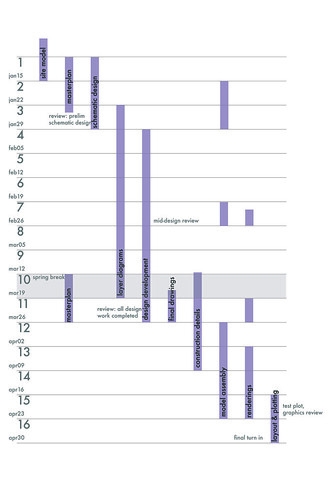In all my reading, I've found plenty of support for my thesis of transportation as a generator of public space. In spite of all the
encouragement, however, it's pretty disheartening to read something like this (especially from an author you admire):
In dispersed areas, architects will have to give up on their dream of fixed rail transit as a generator of public spaces. Margaret Crawford, "Architecture and Dispersal"
"Giving up the dream" is a tough idea to swallow in the middle of one's thesis project, and, I suspect, a little counterproductive. Coming to terms with the realities around an academic architecture project is one thing; dispensing with everything critical and subversive and theoretically challenging about the project is another entirely. Finding a balance between castles-in-the-air design and concession to the status quo is a particularly anxiety-ridden task for every architect worth his or her salt, I suppose, and there's already an
echo-chamber of debate on the topic (well worth reading, nonetheless).
I started the semester with this paragraph, from my original thesis proposal:
Designers must be able to productively address the American suburb and still maintain an energy of resistance and social progress, working to change the system from within that system itself. In order to effect real positive change in the public realm, architecture must engage the political realities of its production, rejecting positions of either detached criticality or enthusiastic “pragmatism”. By addressing the politics of program, site, and construction through design, without retreating into metaphorical abstraction or surrendering to glib commercialism, architecture can regain meaning and relevance in the lives of its users.
I still agree (kind of), but it's taken me another three months or so to decide that, for this project, I'd rather error on the side of 'critical detachment'. I realized this sometime around 5am last week, when, as I was verifying that my site plan drawing was accurate down to the hundredth of a foot, it occurred to me that it doesn't really matter because I'm still in school. Now: while it's not like I want to design in a vacuum, I do hope to maintain a certain critical ambition throughout the design process.

